In YDSE monochromatic light of wavelength 600 nm incident of slits as shown in figure.
_PHY_E01_002_Q01.png)
If S1S2=3mm,OP=11mm then
If α=0.36π degree then destructive interface at point P
If α=0.36π degree then constructive interfaces at point O
If α=0 then constructive interface at O
Fringe width depends an α
The correct Answer is:A, B, C
_PHY_E01_002_S01.png)
Δx=dsinα+dsinθ
θα : small angle
sinθ≅tanθ=yb
Δx=dα+dyD
(A) Δx=3mm×0.36π×π180+3mm×11mm1=39000
3900n,=(2n−1)λ2=(2n−1)×600nm2
n=7
destructive inference happened
(B) Δx=3mm×0.36π×π180+0=600nm
600nm=nλ
n=1
constructive interfrence
(C ) Δx=0
So constructive interference
(D) Fringe width does not depend on α.
Topper's Solved these Questions
- JEE ADVANCEDBOOK - JEE ADVANCED PREVIOUS YEARCHAPTER - JEE ADVANCEDEXERCISE - MULTIPLE CHOICE QUESTIONS
22 Videos
- JEE ADVANCEDBOOK - JEE ADVANCED PREVIOUS YEARCHAPTER - JEE ADVANCEDEXERCISE - SECTION-III (Comprehension Type )
3 Videos
- JEE (ADVANCE) 2020BOOK - JEE ADVANCED PREVIOUS YEARCHAPTER - JEE (ADVANCE) 2020EXERCISE - SECTION 3
6 Videos
- JEE ADVANCED 2020BOOK - JEE ADVANCED PREVIOUS YEARCHAPTER - JEE ADVANCED 2020EXERCISE - SECTION-3
6 Videos
Similar Questions
In a Young's double slit experiment, the slit separation d is 0.3 mm and the screen distance D is 1 m. A parallel beam of light of wavelength 600 nm is incident on the slits at angle as shown in figure. On the screen, the point O is equidistant from the slits and distance PO is 11.0 mm. Which of the following statement(s) is/are correct ?
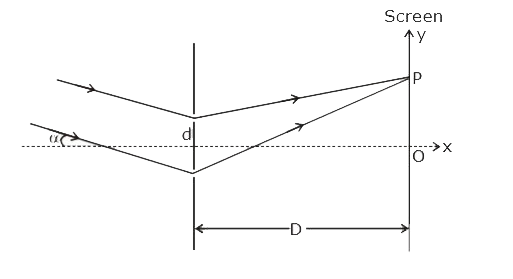
View SolutionA monochromatic light of wavelength 500nm is incident normally on a single slit of width 0.2mm to produce a diffraction pattern. Find the angular width of central maximum obtained on the screen, 1m away.
Estimate the number of fringes obtained in YDSE with fringe width 0.5mm, which can be accommodated within the region of total angular spread of the central maximum due to a single slit.
View Solution
Knowledge Check
In the given figure ,C is middle point of line S1S2.A monochromatic light of wavelength γ is incident on slits.The ratio of intensites of S3andS4 is
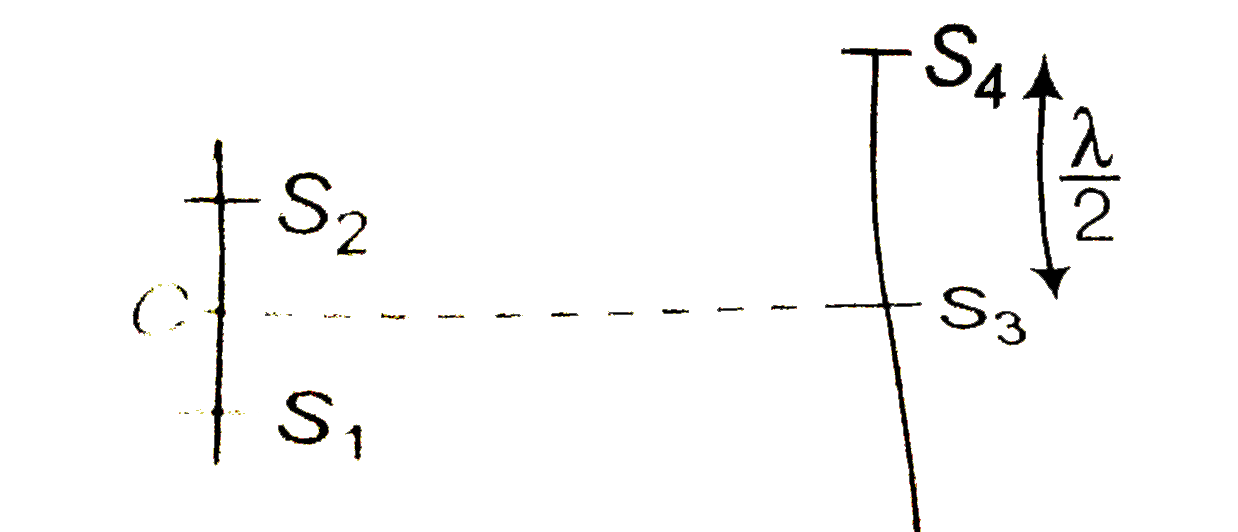 A0B∞C4:1D1:4
A0B∞C4:1D1:4In arrangement shown in figure, plane wavefront of monochromatic light of wavelength λ is incident on identical slits S1 and S2. There is another pair of indentical slits S3 and S4 which are having separation Z=λD2d Point O is on the screen at the common perpendicular bisector of S1S2 and S3S4.I1 is the intensity at point O Now the board having slits S3S4 is moved upward parallel to itself and perpendicular to line AO till slit S4 is on line AO and it is observed that now intensity at point O is I2 then I2I1 is :
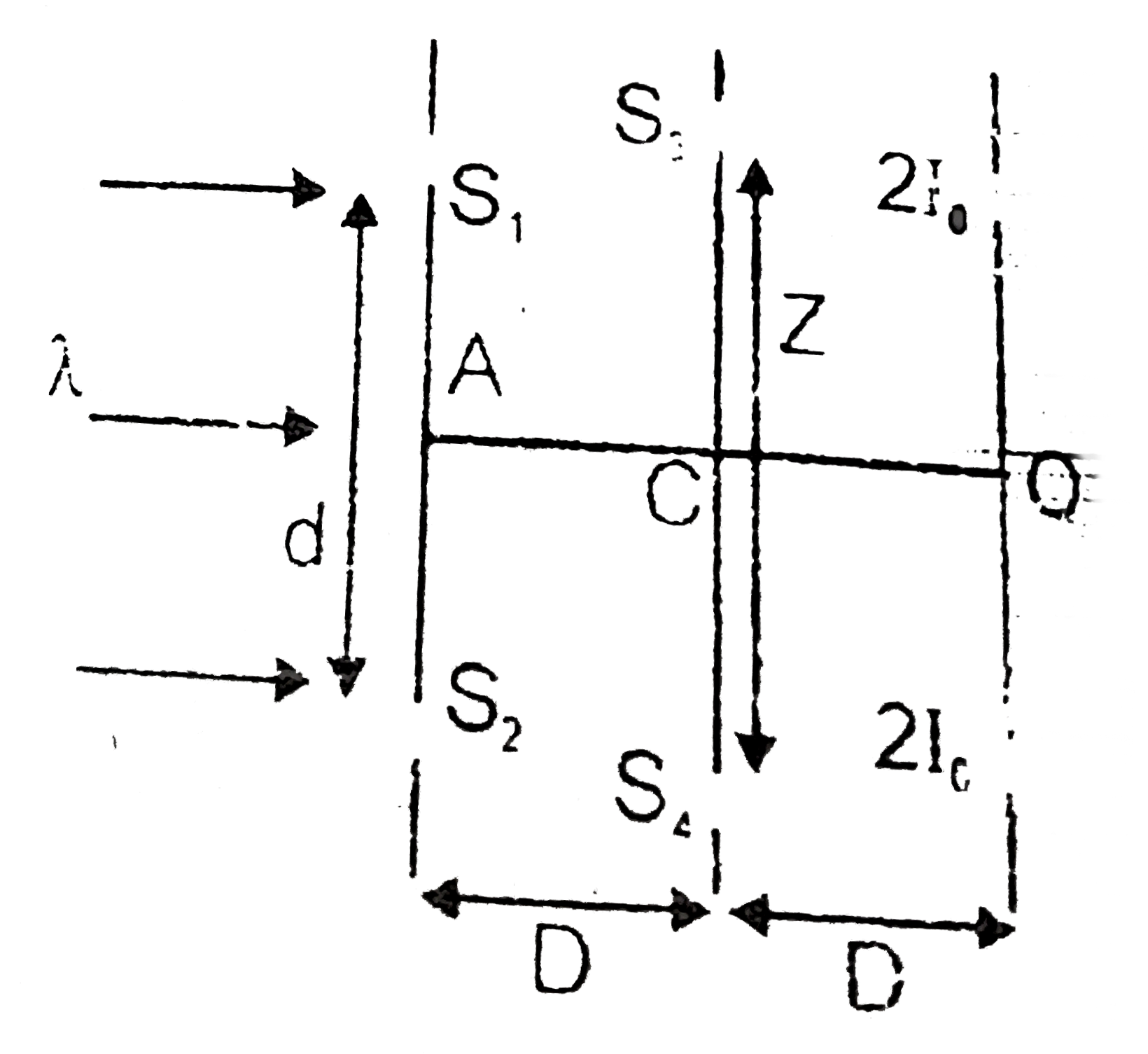 A12B2C1D0
A12B2C1D0Monochromatic light of wavelength 580 nm is incident on a slit of width 0.30 mm. The screen is 2m from the slit . The width of the central maximum is
A3.35×10−3mB2.25×10−3mC6.20×10−3mD7.7×10−3m
A parallel beam of monochromatic light of wavelength 4500Å is allowed to incident on a long slit of width 0.2 mm. Find the angular divergence in which most of the light is diffracted.
View SolutionA narrow slit of width 1 mm is illuminated by monochromatic light of wavelength 600 nm. The distance between the first minima on either side of a screen at a distance of 2 m is
View SolutionIn YDSE, coherent monochromatic light having wavelength 600 nm falls on the slits. First-order bright fringe is at 4.84 mm from central maxima. Determine the wavelength for which the first-order dark fringe will be observed at the same location on screen. (TakeD=3m.)
View SolutionFigure shows a YDSE setup having identical slits S1 and S2 with d =5 mm and D = 1 m. A monochromatic light of wavelength λ=6000Å is incident on the plane of slit due to which at screen centre O, an intensity I0 is produced with fringe pattern on both sides Now a thin transparent film of 11μm thickness and refractive index μ=2.1 is placed in front of slit S1 and now interference patten is observed again on screen.
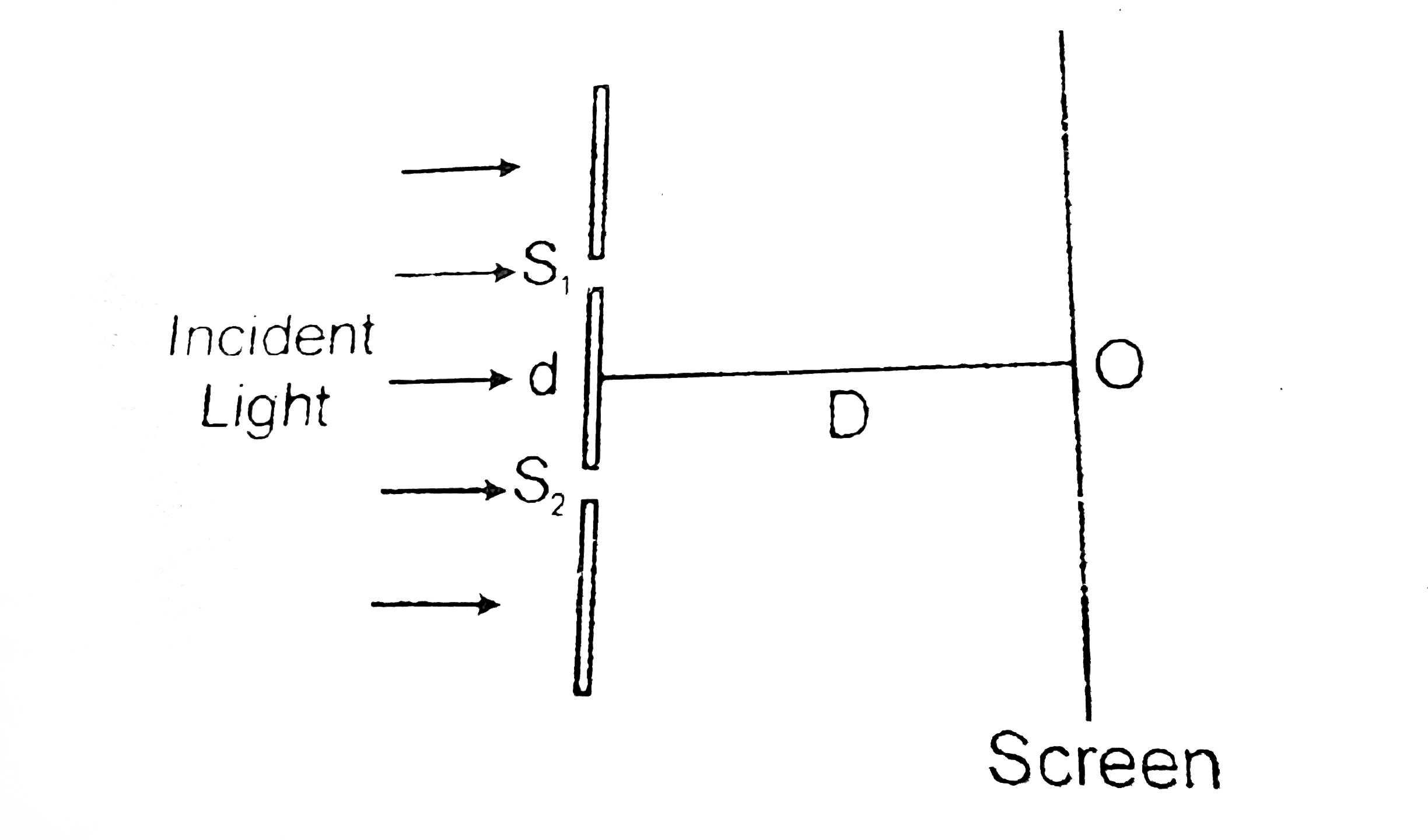
After placing the film of slit S1, the intensity at point O screen is :
View SolutionFigure shows a YDSE setup having identical slits S1 and S2 with d =5 mm and D = 1 m. A monochromatic light of wavelength λ=6000Å is incident on the plane of slit due to which at screen centre O, an intensity I0 is produced with fringe pattern on both sides Now a thin transparent film of 11μm thickness and refractive index μ=2.1 is placed in front of slit S1 and now interference patten is observed again on screen.
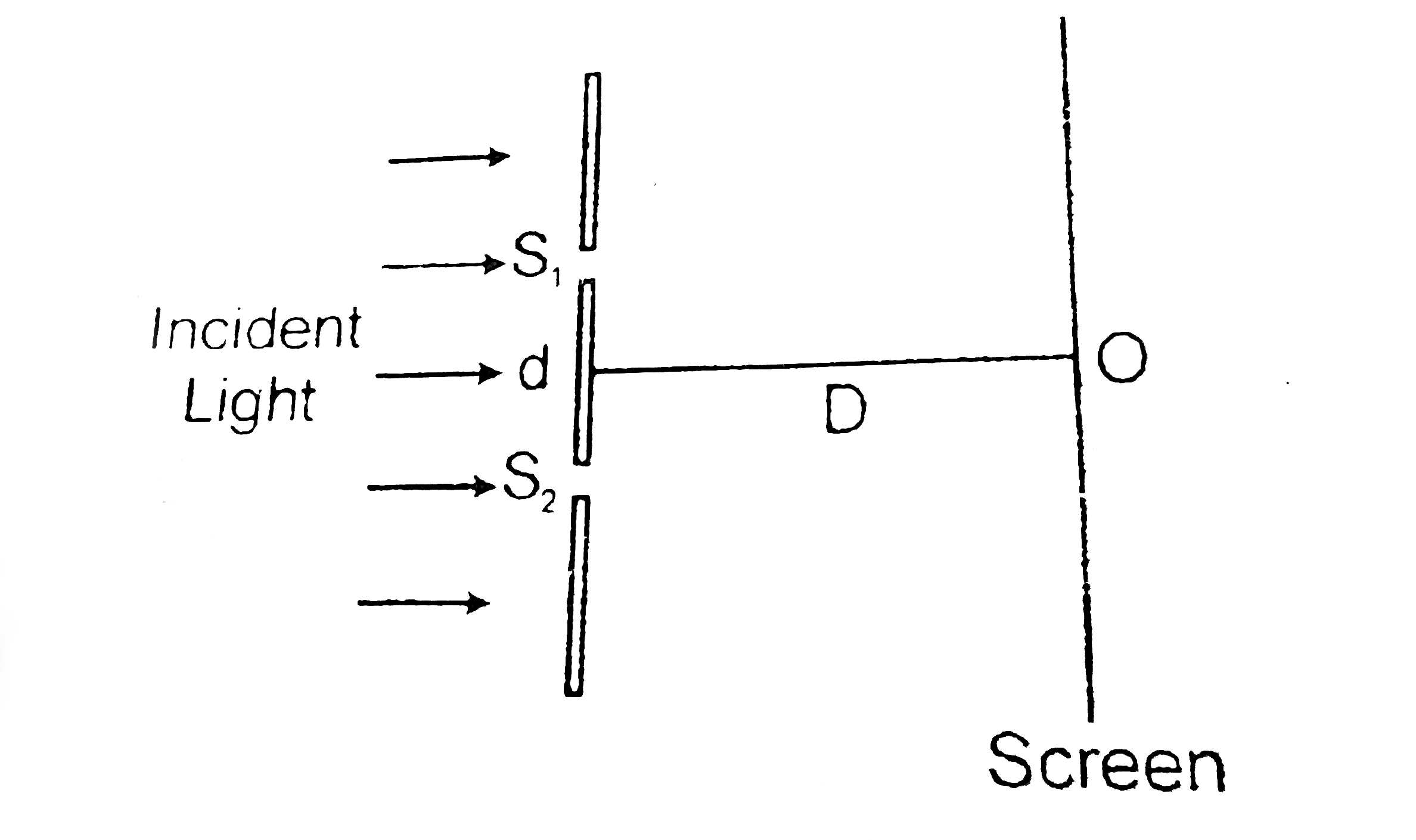
Due to placement of film in front of S1, how many bright fringes cross the point O of screen excluding the one which was at O earlier :
View Solution
